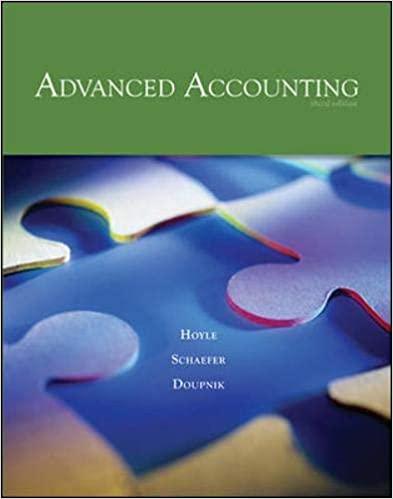On January 1, 2009, Travers Company acquired 90 percent ofYarrow Companys outstanding stock for $720,000. The 10
Question:
On January 1, 2009, Travers Company acquired 90 percent ofYarrow Company’s outstanding stock for $720,000. The 10 percent noncontrolling interest had an assessed fair value of $80,000 on that date. Any acquisition-date excess fair value over book value was attributed to an unrecorded cus¬ tomer list developed by Yarrow with a remaining life of 15 years. LO9 On the same date, Yarrow acquired an 80 percent interest in Stookey Company for $344,000. At the acquisition date, the 20 percent noncontrolling interest fair value was $86,000. Any excess fair value was attributed to a fully amortized copyright that had a remaining life of 10 years. Although both investments are to be accounted for using the cost method, neither Yarrow nor Stookey distributed dividends during 2009 or 2010. Travers has a policy to pay cash dividends each year equal to 40 percent of operational earnings. Reported income totals for 2009 follow:
TraversCompany. $300,000 YarrowCompany. 160,000 Stookey Company.120,000 Following are the 2010 financial statements for these three companies. Stookey has transferred numerous inventory to Yarrow since the takeover amounting to $80,000 (2009) and $100,000 (2010). These transactions include the same markup applicable to Stookey’s outside sales. In each year, Yarrow carried 20 percent of this inventory into the succeeding year before disposing of it. An effective tax rate of 45 percent is applicable to all companies.
Sales.
Cost of goods sold.
Operating expenses.
Net income.
Retained earnings, 1/1/10.
Net income (above).
Dividendspaid.
Retained earnings, 12/31/10 Currentassets.
Investment in Yarrow Company Investment in Stookey Company . . . Land, buildings, and equipment (net)
Total assets.
Liabilities.
Common stock.
Retained earnings, 12/31/10.
Total liabilities and equities.
Travers Yarrow Stookey Company Company Company
$ (900,000)
$ (600,000)
$(500,000)
480,000 320,000 260,000 100,000 80,000 140,000
$ (320,000)
$ (200,000)
$(100,000)
$ (700,000)
$ (600,000)
$(300,000)
(320,000)
(200,000)
(100,000)
128,000
-0-
-0-
$ (892,000)
$ (800,000)
$(400,000)
$ 444,000
$ 380,000
$ 280,000 720,000
-0-
-0-
-0-
344,000
-0-
949,000 836,000 520,000
$ 2,113,000
$ 1,560,000
$ 800,000
$ (721,000)
$ (460,000)
$(200,000)
(500,000)
(300,000)
(200,000)
(892,000)
(800,000)
(400,000)
$(2,113,000)
$(1,560,000)
$(800,000)
a.Prepare the business combination’s 2010 consolidation worksheet; ignore income tax effects.
h. Determine the amount of income taxes for Travers and Yarrow on a consolidated tax return for 2010.
c. Determine the amount of Stookey’s income taxes on a separate tax return for 2010.
d. Based on the answers to requirements
(b) and (c), what journal entry does this combination make to record 2010 income taxes?
Step by Step Answer:

Advanced Accounting
ISBN: 9780073379456
9th Edition
Authors: Joe Ben Hoyle, Timothy S. Doupnik, Thomas F. Schaefer, Oe Ben Hoyle





